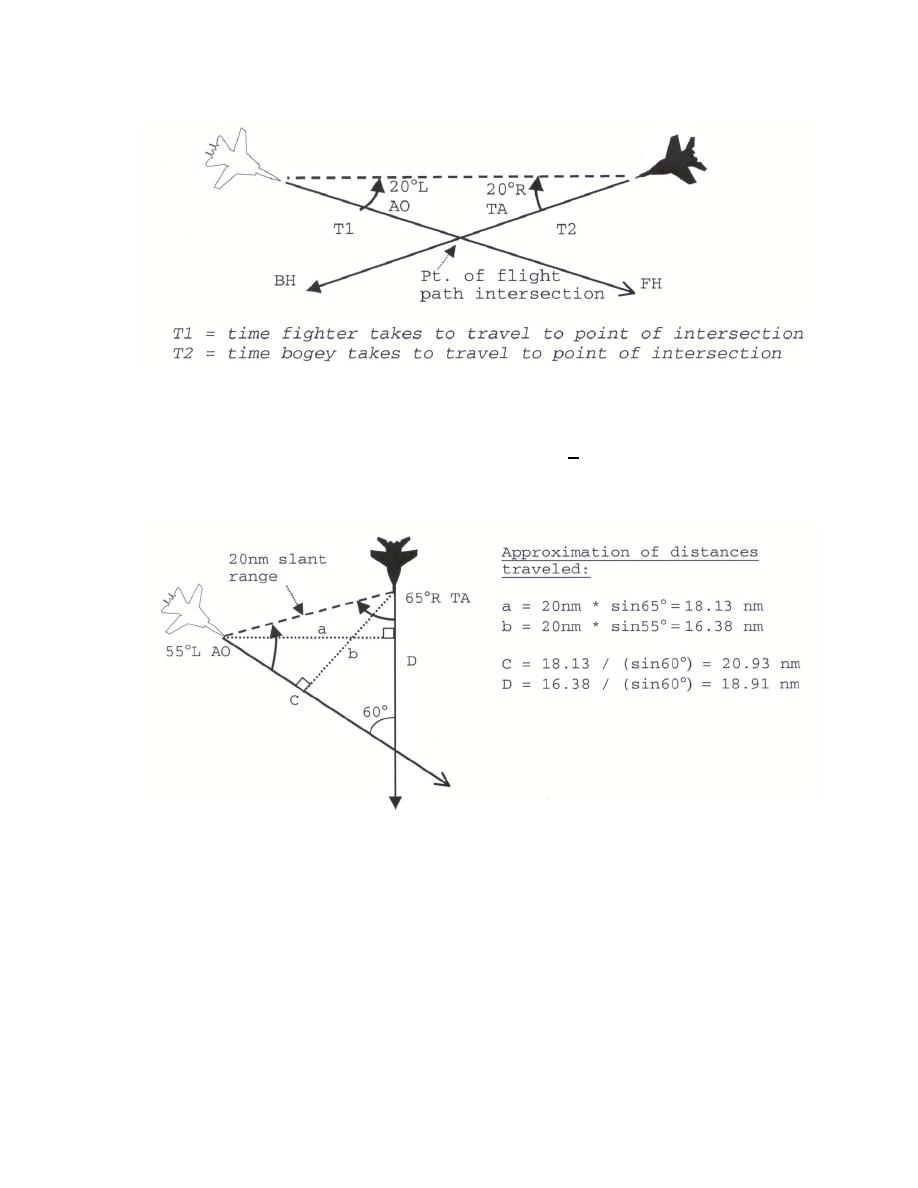 |
|||
|
|
|||
|
|
|||
| ||||||||||
|
|  INTERCEPT PROCEDURES TEXTBOOK
Figure 2
The figure below shows the approximate flight path distance of both aircraft when TA is
65R and the bogey is within the functional limits of the scope (+55). The actual flight path
distance computation would involve trigonometric relationships not relevant to practical
execution. The computations below are provided for illustration purposes.
Figure 3
In this example, a conventional collision course correction of "Right hard 10, steady _____"
would place the bogey outside the scope limits at 65L. However, the bogey has a shorter
distance to travel than the fighter. So if the fighter takes no action, the bogey will drift across the
fighter's nose.
The fighter in this case must cover approximately 20.93 nm in the same time the bogey
travels approximately 18.91 nm. To do this, the fighter must increase airspeed. How much of an
increase is determined by complex mathematical formulas. Without going through all of the
math, here at VT-86 the required speed advantage for these high TA intercepts will be .1 IMN
over the bogey's airspeed.
109
|
|
Privacy Statement - Press Release - Copyright Information. - Contact Us |